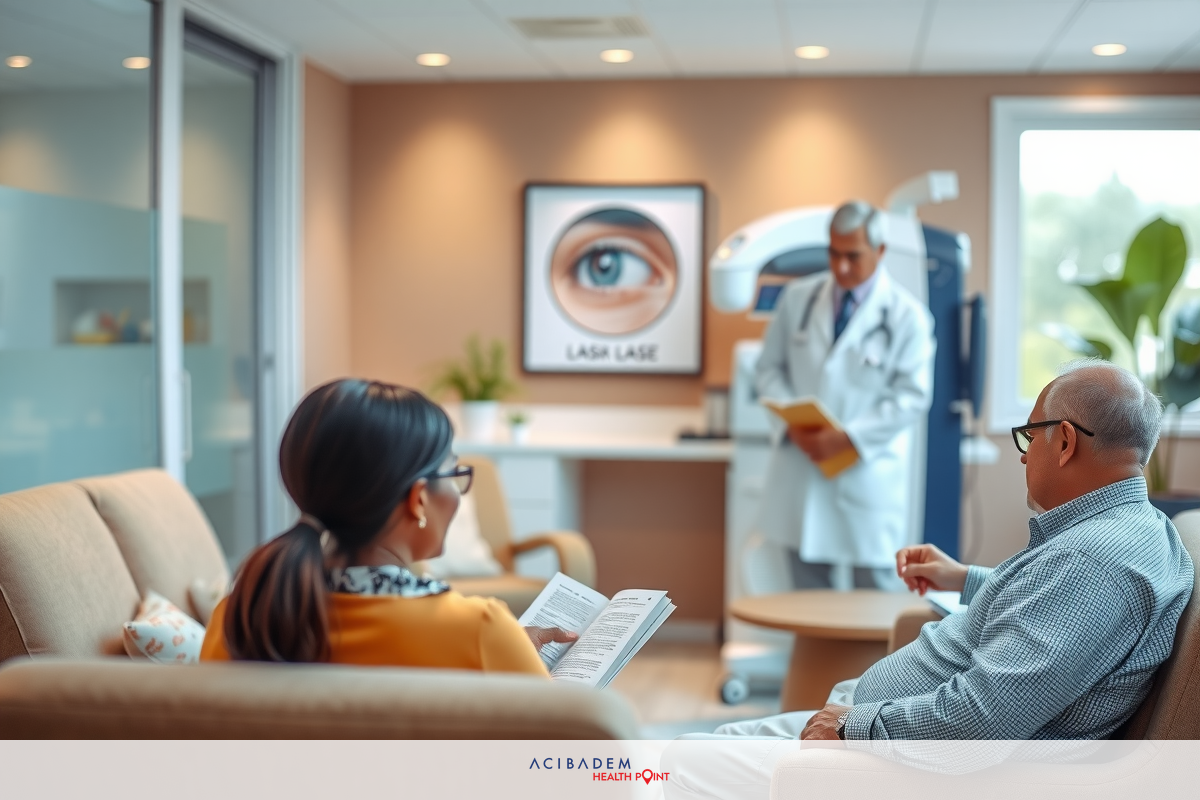What Exactly is LASIK Eye Surgery
What Exactly is LASIK Eye Surgery LASIK eye surgery, a term frequently bandied about in the realm of ophthalmology, often leaves patients curious and brimming with questions. Is it safe? How does it work? Will it give me perfect vision? These are just some inquiries that might arise when one hears of this modern method for vision correction.
The journey to comprehending LASIK eye surgery starts with understanding its role as a type of refractive surgery for the correction of myopia, hypermetropia, and astigmatism. This form of laser eye treatment has grown in popularity due to its promise of improved visual acuity without the need for glasses or contact lenses. Yet, as promising as it sounds, potential candidates should be aware that while many experience dramatic improvements in their sight post-surgery, individual results can vary.
Despite being surrounded by medical jargon and complex concepts, LASIK doesn’t have to be an intimidating topic. By breaking down each aspect from benefits to recovery process – we can demystify this fascinating area within ophthalmology and empower you with knowledge about your options.
What is LASIK Eye Surgery?
LASIK eye surgery, or Laser-Assisted In Situ Keratomileusis, stands as a popular choice for individuals seeking vision correction. This surgical procedure utilizes a laser to reshape the cornea. The clear front part of the eye, that allows light entering the eye to be properly focused onto the retina for clearer vision. It’s an innovative technique within ophthalmology that offers an alternative to eyeglasses and contact lenses.
The process begins with numbing drops being applied to your eyes before a protective flap is created on your cornea. An excimer laser, which produces a cool ultraviolet light beam, then removes microscopic amounts of tissue from the cornea to reshape it so it more accurately focuses light on the retina. The protective flap is then replaced where it adheres naturally without requiring stitches, quite an impressive feat in refractive surgery!
One might wonder about suitability for this kind of vision correction. Eligibility involves several factors including age, health conditions and expectations post-surgery. Typically candidates are at least 18 years old with stable vision for at least one year prior to surgery; they should also be free from certain health issues such as uncontrolled diabetes, autoimmune diseases or infections which may affect healing rates after LASIK eye surgery.
It’s important though not only to understand what LASIK eye surgery entails but also its potential benefits and risks which we will explore further in upcoming sections.
Benefits of LASIK Eye Surgery
LASIK eye surgery, a widely recognized form of refractive surgery, has transformed the landscape of vision correction. Its popularity is not without reason; indeed, this laser-based procedure offers several impressive benefits that can lead to notable improvements in one’s quality of life.
One profound advantage lies in the potential for enhanced visual acuity. Many patients report an immediate improvement post-surgery and reach their final level of clarity within a few days to weeks – a rapid return compared to other forms of ophthalmologic intervention.
Quick recovery: The healing process after LASIK is usually fast. Most people can return to work and resume driving as early as 24 hours after the procedure.
Reduced dependency on glasses or contacts: For many, one key motivator behind choosing LASIK is the prospect of living free from corrective lenses. This freedom also opens up opportunities for activities previously

hindered by glasses or contacts.
Long-term cost savings: While there’s an upfront cost attached to LASIK eye surgery, over time it could save you money spent on new glasses, contact lenses and solutions.
Improved lifestyle: With corrected vision, your daily life may improve significantly whether enjoying hobbies like reading and sports or simply experiencing clearer sight in everyday tasks.
While these benefits make LASIK appealing for those seeking vision correction through refractive surgery techniques, ensure you consider all factors such as risks involved and individual suitability before making a decision.
Recovery and Results
In the realm of refractive surgery, LASIK eye surgery stands out not only for its transformative impact on vision correction but also for its relatively swift recovery period. The process begins immediately after the procedure with a short rest in the clinic before being discharged home. It’s advised to have someone else drive you as your vision may be blurry initially – this is perfectly normal and part of the healing process.
Immediately following LASIK eye surgery, patients can experience varying degrees of discomfort, including
burning or itching sensations in their eyes. This usually subsides within six hours post-surgery; it is imperative that during this time one resists rubbing their eyes as it could dislodge the corneal flap that was created during surgery. Over-the-counter pain medication typically suffices to manage any discomfort experienced during early stages of recovery.
Within 24 hours post-surgery, most patients notice an improvement in their sight although optimal visual outcomes are typically achieved over several weeks as your eyes continue to heal and adjust. Regular followups with your ophthalmologist will monitor healing progress and ensure any complications are addressed promptly.
It’s essential to understand what constitutes typical recovery versus signs that warrant immediate medical attention such as excessive pain or sudden vision loss. While rare thanks to advances in laser technology used in LASIK procedures, potential risks should not be overlooked when considering this form of vision correction.
While many achieve 20/20 vision post-LASIK eye surgery, often considered ‘perfect’ sight. It’s important to set realistic expectations regarding results which can vary based on individual circumstances including age and severity of pre-existing conditions affecting visual acuity.
Frequently Asked Questions
What does LASIK stand for in LASIK eye surgery?
LASIK is an acronym for Laser-Assisted In Situ Keratomileusis. It refers to the use of a laser to reshape the cornea—part of your eye—to correct vision.
How long does it take to recover from LASIK eye surgery?
Recovery times can vary, but most people notice improved vision within 24 hours following surgery. Optimal visual outcomes are fully realized over several weeks as your eyes continue healing and adjusting.
Are there any risks associated with undergoing LASIK eye surgery?
As with any surgical procedure, there are potential risks involved. These may include dryness, glare or halos around lights at night, and in rare cases, loss of vision that cannot be corrected with glasses or contact lenses.
Can anyone undergo LASIK Eye Surgery for vision correction?
While many people are suitable candidates for LASIK eye surgery, certain conditions such as severe dry eyes or certain corneal diseases could mean this type of refractive procedure isn't right for you. Always consult with an ophthalmologist before making a decision about vision correction methods.








